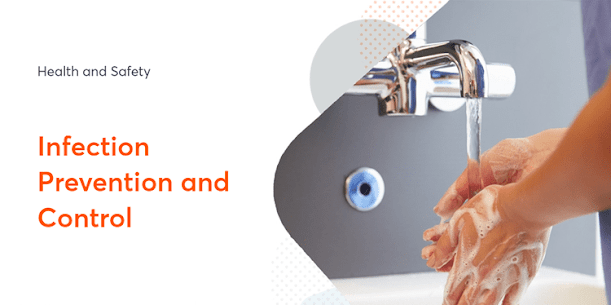Infection Control Course
Introduction to Infection Control Course
Infection control is a critical aspect of healthcare that involves measures to prevent and control the spread of infections. These measures are designed to protect patients, healthcare workers, and the community from infectious diseases. The primary goal of infection control is to minimize the risk of healthcare-associated infections (HAIs), which are infections acquired in healthcare settings.
Understanding Pathogens and Transmission
Pathogens are microorganisms such as bacteria, viruses, fungi, and parasites that can cause disease. Understanding how these pathogens spread is crucial for effective infection control. There are several modes of transmission:
- Contact Transmission: Direct contact (e.g., touching an infected person) or indirect contact (e.g., touching contaminated surfaces).
- Droplet Transmission: Respiratory droplets expelled during coughing, sneezing, or talking.
- Airborne Transmission: Smaller droplets that remain suspended in the air and can be inhaled.
- Vector-Borne Transmission: Infections transmitted by vectors like mosquitoes or ticks.
Standard Precautions
Standard precautions are the minimum infection prevention practices that apply to all patient care, regardless of suspected or confirmed infection status. They include:
- Hand Hygiene: Proper handwashing with soap and water or using alcohol-based hand sanitizers.
- Personal Protective Equipment (PPE): Use of gloves, gowns, masks, and eye protection to protect against exposure to infectious agents.
- Respiratory Hygiene/Cough Etiquette: Measures to contain respiratory secretions to prevent the spread of infections.
- Safe Injection Practices: Using sterile needles and syringes for each injection to prevent transmission of infections.
Transmission-Based Precautions
These are additional precautions used for patients known or suspected to be infected with pathogens that can be transmitted by airborne, droplet, or contact routes:
- Contact Precautions: Use of gloves and gowns when interacting with the patient or their environment.
- Droplet Precautions: Use of masks and maintaining a safe distance from the patient.
- Airborne Precautions: Use of N95 respirators or higher-level respiratory protection and ensuring the patient is in a negative pressure room.
Sterilization and Disinfection
Sterilization and disinfection are critical processes in infection control to eliminate or reduce the number of pathogens:
- Sterilization: A process that destroys all forms of microbial life, including spores. Methods include autoclaving (steam under pressure), ethylene oxide gas, and dry heat.
- Disinfection: A process that eliminates many or all pathogenic microorganisms, except bacterial spores, on inanimate objects. Methods include chemical disinfectants (e.g., bleach, alcohol) and physical methods (e.g., UV light).
Environmental Cleaning
Regular cleaning and disinfection of the healthcare environment are essential to reduce the risk of HAIs. This includes cleaning patient rooms, common areas, and medical equipment. High-touch surfaces like doorknobs, bed rails, and light switches should be cleaned frequently.
Antimicrobial Stewardship
Antimicrobial stewardship involves the appropriate use of antibiotics to minimize resistance and ensure effective treatment of infections. This includes prescribing the right antibiotic, at the right dose, for the right duration.
Education and Training
Continuous education and training of healthcare workers on infection control practices are vital. This includes initial training upon hiring and regular updates to ensure adherence to the latest guidelines and protocols.
Monitoring and Surveillance
Ongoing monitoring and surveillance of infection rates and infection control practices help identify areas for improvement. This involves collecting and analyzing data on HAIs and conducting regular audits of infection control practices.
Outbreak Management
Effective outbreak management involves rapid identification, containment, and investigation of infection outbreaks. This includes isolating affected patients, tracing contacts, and implementing control measures to prevent further spread.
Conclusion
Infection control is an integral part of healthcare that requires a multifaceted approach. By understanding pathogens and their transmission, implementing standard and transmission-based precautions, ensuring proper sterilization and disinfection, and educating healthcare workers, we can significantly reduce the risk of HAIs. Continuous monitoring, antimicrobial stewardship, and effective outbreak management further enhance infection control efforts, ensuring the safety and well-being of patients and healthcare providers.
Address
1st floor, Noya Plaza, Kalathipady, Vadavathoor P O, Kottayam, Kerala 686010
+91 944 600 0489 (First Aid & Safety Training)
courses@iiems.in
www.iiems.org




Comments
Post a Comment